(The article below is a RaceDayCT column – The views expressed in this column are solely the opinion of the writer)
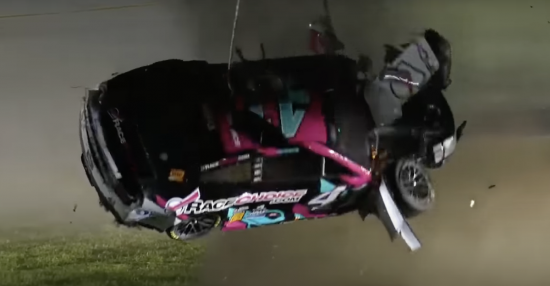
Ryan Preece is still looking for his first victory in NASCAR’s highest level Cup Series.
But on Saturday night the Berlin native and former Whelen Modified Tour champion cemented a moment in series history that will shine for years to come, even if it’s for all the wrong reasons.
With five laps remaining in the Cup Series Coke Zero Sugar 400 Saturday, the world of NASCAR was left aghast once again by another horrendous crash at Daytona International Speedway.
The great news is that after a spending a night in the hospital Preece was sent home Sunday morning with no significant injuries.
But it was another moment in time at Daytona that won’t soon be forgotten.
Another moment where those watching were left wondering how a 3,400 pound race car could somehow so easily defy the laws of gravity and physics.
Another moment when praying hands suddenly dominated NASCAR social media.
Another moment that had a lot of people in the sport once again asking, why do they continue doing this?
Audio from Preece’s Stewart-Haas Racing team seconds after the crash says so much of what needs to be said.
After getting word that Preece was out of the car came this comment from one person on the team: “So much for staying on the fucking ground. … We’re going to kill somebody at one of these places.”
There’s doing something you know is dangerous and then there’s doing something that only seems to dare tragedy in every way. Driving a race car is inherently dangerous. Every person that straps into a race car, from the grassroots level at a one third-mile oval to the highest levels of NASCAR understands that.
But accepting that premise shouldn’t make it alright for the powers that be to essentially say, “Well we know it’s dangerous, so let’s go test what the ultimate limits of that danger might just be.” That’s what the sanctioning body is doing every time cars start turning laps in competition at Daytona and Talladega Superspeedway.
“The Big One” has become a cliché term in the realm of NASCAR when it comes to events at Daytona and Talladega. A now seemingly generic NASCAR term for crashes that typically send vehicles flying, flipping and crunching at speeds close to 200 mph.
With five laps remaining in Saturday’s event at Daytona, after contact from the car of Erik Jones, Preece’s car turned abruptly left and then got sideways into the grass on the backstretch. While traveling sideways the car got airborne beginning a horrifying sequence of acrobatic flips of the car before coming to rest on all four wheels.
Before the 2022 Cup Series season NASCAR introduced its Next Gen car for the series. It’s a ride that made wholesale changes to the design of cars at NASCAR’s highest levels. One thing it was supposed to neutralize was cars flying at Daytona and Talladega.
Was Preece’s wreck Saturday just an anomaly? A moment in a sport where no matter how hard you try to make a car not fly, sometimes it just will when it’s traveling at more than 180 mph? The question is, should the sport even be taking the chance with the Russian roulette that is anomaly possibly turning to tragedy?
“Fifteen, 20 years ago, these were the types of wrecks we expected to see at Daytona and Talladega,” NBC Sports commentator Dale Earnhardt Jr. said on air after Preece’s crash Saturday. “And NASCAR has changed a lot of things about these cars to try to keep them on the ground. And for the most part, unless they find themselves in these odd situations, it works.”
Go back and read that again. Unless they find themselves in these odd situations. It’s basically saying, they can do what they do to make these incidents happen less, but they’re still going to happen. NASCAR puts the effort into engineering the cars to stop them from flying because they know just how dangerous and unpredictable everything becomes once the cars fly. But what Saturday night proved is you might be able to make the incidents happen with less frequency, but you’re not going to stop them.
NASCAR must come to grips with the fact that stock car competition has evolved far beyond even trying to minimally manage safety at Daytona and Talladega. The first question asked by so many who can understandably absorb that something is very wrong with the type racing that has become normal at Daytona and Talladega is typically, how do you fix it?
To many, the thought of making major changes to the layouts at Daytona and Talladega seems on the surface outlandish. Both are classic venues of the sport’s history. They are the grandest venues that NASCAR plays and such a part of the very fabric that is the legacy of stock car racing. Though the unfortunate fact is, if no amount of research and development and advancements in engineering can keep the cars from flying then maybe the time has come to stop racing on tracks where cars get airborne at close to 200 mph. If changing the cars isn’t stopping what you’re trying to stop from happening then it’s time for radical changes to the tracks.
Across the spectrum of competition, evolution changes sports in plenty of different ways. And it’s been seen plenty in NASCAR too, from the organizational structure of teams at the sport’s highest level to the changes in point systems to continued improvements in the safety of racing facilities and vehicles.
Change born of growth and evolution is only natural.
In the realm of NASCAR in 2023 competition at Daytona and Talladega is essentially akin to old-style leather helmets being worn for an NFL game. They don’t work.
You can tinker with the variables all you want to try to find a happy medium so it feels safe, but eventually you have to address the core of the problem, that you’re playing with the technology of 2023 on a playing field that was built to hold up to the standards and technology of 1960’s race cars.
The sport, the cars, the technology of the game, it has left these tracks behind. Though, NASCAR desperately clings to these antiquated behemoths. Nobody wants to close the Roman Colosseum, for where shall we see the Christians slaughtered by the lions?
Yes, motorsports are inherently dangerous. Yes, we’ve heard that used as a sooth the pain mantra for tragedy in racing for years. But there’s inherently dangerous and then there’s purposely dancing on the edge of disaster lap after lap after lap and somehow calling that manageably safe competition.
The reality is, NASCAR is playing an appalling lottery at Daytona and Talladega. There’s truth to the constant statements concerning advancement of safety engineering of the race cars, but saying that after another person is cut out of their car at one of these tracks is called rationalizing the lottery being played.
Right now is about coming to grips with the fact that safely competing at Daytona and Talladega is no longer feasible. It’s about coming to the realization that to keep these facilities operating the tracks themselves have to be changed entirely. Sitting back and waiting for the “Oh no tragedy happened” day to finally decide that change has long been needed should be unacceptable in the sport.
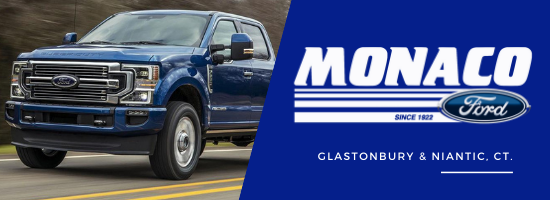







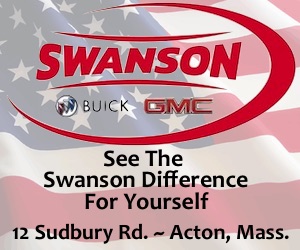
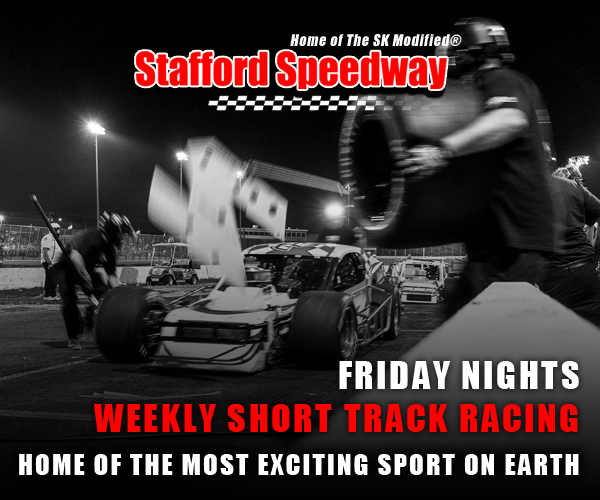



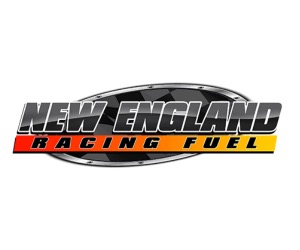
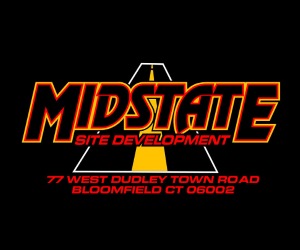


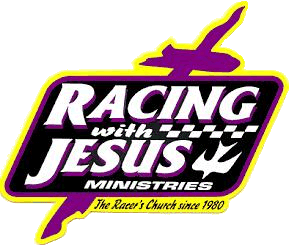

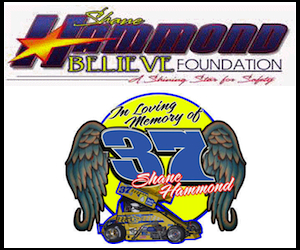
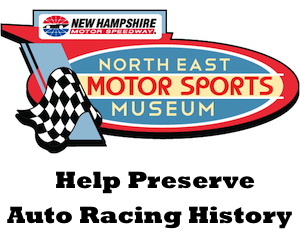
It should also be noted that where Blaney wrecked, the SAFER wall never returned to it’s original position. Some have mentioned that it was almost the same place and the same angle as Earnhardt Sr.’s fatal wreck. If you go back and look at the wall after Blaney’s wreck and look by the O in Daytona you can see that it is still pushed in. We know from having seen it at Loudon that it takes about an hour to re-weld and repair the wall. So I guess Nascar just decided to keep their fingers crossed and hope that nobody else hit there.
Good article Shawna ok. Nascar has had problems with cars getting airborne for years, and nothing they did seemed to stop that. Last year they introduced this next gen car, with a full flat pan bottom. This design has proven to be troublesome in other forms of racing. Maybe they should modify the pan so it’s open under the drivetrain to evacuate air and help keep the car grounded. Or simply slow the cars down using drag elements. Something needs to be done and soon. Last night could have ended differently, tragically.
The pearl clutching after some of these wrecks is insane.
The grass needs to be removed. Other than that, the only way to prevent wrecks like this is to slow them down tremendously. Something they already do. The arca cars are faster than cup cars right now, much to fans dismay. And at that point, you have a 3 wide parking lot.
The cars preformed well in both wrecks. The cars have preformed well in these wrecks for 20 years now. They will learn and preform even better in the next big one.
I would even bet blaneys wreck pulled comparable G’s than some wrecks on smaller tracks the last few years.
no one bats an eye when an indycar goes 240 into the turn at Indy.
Taking your most popular form of racing and kneecapping it doesn’t help anyone.
And i have no idea what you see with the wall sharpie fan. At London, the wall got punctured. I don’t see a puncture, nor do i see a significant shape difference. This is not the first hit like that at these places and they rarely have to make repairs. They know what they are doing.
The grass doesn’t help, get rid of it, how about the gravel run-offs like on Road courses & F1, would that help?
Thanks Shawn, you actually wrote my exact thought today, they should stop racing there.. just too fast and the “big one” (which they can’t wait to say), will always happen… I agree Zig, remove the grass, slow them down.. but they won’t..
Blaney sure did hit a ton and the wall took a lot of that energy. I was happy to see that safety advancement work so vividly. Preece’s car did its job but really anything could have happened to him as he was rolling endlessly.. it reminded me to the Newman crash – I really don’t want to see these anymore.. I wish NASCAR would see the logic here vs. the $ signs and “excitement” factor they think “big ones” generate… maybe it’s me, but I’ve always felt the booth glamorizes these by gushing over the safety features, seemingly avoiding the real conversation that should be had… such as this very article… thanks again Shawn for saying it.
How about air bags like motorcycle racing uses or sytrofoam like Oswego?
Goldy,
I agree with your post – good job – both of those wrecks could have had different endings – if it were up to me, both Daytona and Talladega would no longer hold races.
Great article Shawn
Tony M, gravel would take too long to clean up I’m thinking. blood would be much easier.
I agree a great opinion piece. Timely for sure. I don’t have pearls but if I did no doubt would have been clutching them the first time I saw what happened. Preece is our guy that was horrible to see him put through that. Is now the time for a call to action? Probably not more a cautionary tale. This one hits home because Preece is the local hero that made good but I’m not seeing a call to action in the greater racing community. More relief at how well the car performed keeping Preece safe under extraordinary conditions.
28 drivers have lost their lives in NASCAR CUP races. The last Earnhardt over two decades ago. NASCAR CUP has never gone anywhere near that long without a death in a race so it’s pretty clear the changes they’ve made have been effective.
If you’re NASCAR a brand that’s having it’s challenges attracting an audience that knows the Daytona and Talladega are two of the most profitable tracks with the Daytona 500 their “Super Bowl” you may have an entirely different line of thinking. Doctors checked Preece out stem to stern so to speak and he left the hospital the next day. As far as safety goes NASCAR execs likely thinking they did their job.
Mr. Courchesne is 100% correct. Now is the time to make changes not after someone dies or is permanently paralyzed. But then again if the participants well being were the only concern the NFL would cease operations tomorrow.
Permanent injuries to those gladiators not extraordinary but routine and unavoidable.
They pay drivers huge amounts of money in CUP to do things we think are nuts. Driving those cars at the super speedways is nuts the driver has so little control even under ideal racing conditions. No doubt about the fact the reference to “the big one” is flat out morbid knowing full well how dangerous it can be but it’s part of the attraction as well. Drivers know the risk and no one is making them take it they can walk away.
Reviewing what happened, getting the NASCAR engineers on ways to mitigate the elements that contributed to what happened the likely upshot in all this. Changing the track configuration a non-starter for NASCAR.
There’s no respect. Kyle Busch set the bar in wonton wrecking. He’ll wreck anything to get ahead. It was and is allowed. That’s the problem.
The cars get loose easily at these speeds, and pushing is a bad idea. There should be no bump drafting or contact at all.
The cars need to be equipped with a sensor in the front bumper/nose that detects when that car is in contact with a car in front, and then intermittently cuts the ignition to back the car off. Ignition will resume when the cars are no longer in contact. This could stop much of this type of wrecking. The ignition interrupt will be sort of like a rev limiter interrupt.
It will be better to just park the instigators. Even if it appears heavy handed. That will send a message and get some civility in racing.
We’re pretty lucky to have Ron Silk and Justin Bonsignore in the NWMT. They are showing that racing can be exciting, respectful, and civilized.
I realize this wouldn’t be feasable from a $$ standpoint, but smaller engines make less horsepower and slower speeds. Maybe a slightly more economical alterntive would be to just add weight to the cars. 25 lbs per corner should slow them down some and placed low may help with airborne problems.
If I remember correctly, when this topic arose in the past, Ernie Irvan suggested smaller tires to reduce the grip between them and the track.
hate these races.. You guys know my Opinion… Someone is going to be killed in one of these high flying wrecks… They will use this video to promote the next Superspeedway events..Horrible look… We could have lost Ryan in this one…
I think NASCAR should do what go cart tracks do. The officials could shut off or slow down the cars remotely when a driver is or about to do something stupid.
Desperation. Desperation is what caused both wrecks Saturday. Think about it. The top 16 in points are now set, everyone else is racing for 17th. Daytona should have never been picked as a cutoff race. In fact this whole playoff format sucks, they should go back to straight up point racing, 36 races may the best team win. As long as they paint guy’s into a corner, desperate moves will happen, and the wrecks will continue. Hopefully no one does because of desperation.
This has to be one of the worst takes I’ve ever seen about any race since I started following the sport in 1993. So many weak people look at that wreck and see a million things that went wrong without even taking a split second to recognize the millions of things that went right that allowed both drivers to walk away from these wrecks under their own power. NASCAR’s safety initiatives over the last 20 years kept both of those drivers safe. Why not show a little appreciation for that instead of acting like the sky is falling. Your current approach certainly does nothing to help the sport
Very touchy subject with regards to history of the sport and legends of the sport that made these superspeedways so popular. I attended my first Daytona 500 in 1993 as a young man that loved the local short track racing but wasn’t so sure on the superspeedway racing. Now back then you could stand right on the fence in the backstretch maybe 10 feet from the cars ripping past. I couldn’t believe there was a human being in those cars going by so fast you couldn’t even see them and the pack going by would suck you up to the fence. Totally insane compared to the short track stuff I’d seen live. I was hooked and went for 11 years straight. Loved everything about speed week and the racing. Couple of huge differences between then and now is the size and closeness of the lead pack along with how to read when to bump draft and when to back off. I see a lot of slam drafting as I call it. I like the idea of getting rid of the infield grass as some of the most horrifying wrecks occur when a car digs into the grass instead of landing back on the tar and skidding instead of digging in. I certainly hope that NASCAR can fix it cause I’d hate to see a venue that has so much to do with the sports history go by the wayside or change the track to a road course or different type of oval.
“So many weak people look at that wreck and see a million things that went wrong ”
Uncool man. You can make your point without labeling people that you have know knowledge of as “weak”. It’s a valid opinion and relates to safety of the drivers. That’s much the same a calling any safety measures weak.
Ryan’s car skated across the grass smooth initially. As soon as his car hit the transition of grass to infield road course surface, it allowed the air to collect under the flat bottom and “there she goes.” No disrespect, have known Ryan for years, so don’t even go there.
Surface is a concern for sure and there needs to be long, level, non-gradient in the slightest, asphalt so a car can slide. I understand inside walls then become an issue, but slowing up would be much better and having a more impact-withstanding inner wall can be more productive. Yes, money, I know.
Killing the ignition via the tower, now you have subjectivity. Can’t do it. Gravel would cause more flips because you have a sliding car that hits a different surface sideways, and flips would be more common. Just opinion. I do agree, the cars and technology have shown up and saved lives, but when do lives outweigh entertainment. Personally, I hate wrecks. No matter where I see them, I cringed. As a spotter, I had a hard time sleeping that night after one of my drivers wrecked. So, that night, seeing Ryan fly through the air higher than almost any other car ever, couldn’t sleep. It needs to change. If NASCAR moved Daytona or Talladega off the schedule, it wouldn’t bother me. Sometimes things need to change. And they need to change preventatively versus reactionary. I’d love to hear some constructive feedback here.
Lots of great comments here.. ‘fella, I’m not sure how the chain reaction of bumpers being hit as engines get killed, then restarted, wouldn’t be just as dangerous, but I like the technology mindset to solution. Same with smaller engines, tires, added weight, Daytona as the cutoff race (great point Rob!), remove the grass (that’s key and low hanging fruit imo) – the latter has me thinking the brass reaction on that one would be “but where would we spell out DAYTONA in the grass?”… on the pavement dummy…
The notion of removing the two superspeedways I just can’t envision ever happening (NASCAR culture), but then again, innovative mindsets can generate amazing shifts in deep rooted history.. think, the cab industry > Uber, Blockbuster > Streaming services, Film > the digital camera.. it just takes some disruptive thought process…
The’ve tweaked the points and format, tried new race concepts, some have worked (Chicago road course), some haven’t (Bristol dirt, imo).. most often (and unfortunately) real change doesn’t occur until it’s too late – in this case, a fatality… look at the change LIV golf forced upon the PGA Tour.. yea, I’ve gone off the grid here, but what if the SRX brand, just grew and grew and grew…
.. or how about they just call the mile and a half’s, the new superspeedways and start there..
I like the sensor/tech suggestion as well. But more for accumulating data on the super speedways measuring impact number and force. Perhaps matching it up to on track consequences. Does it tell them anything about specific drivers, conditions and are there any changes they can make to mitigate the contact. Moreover does the presence of sensors along cause drivers to be more aware of how aggressive they’re driving and mitigate the big wrecks.
Goldy, the proximity sensor will cut the ignition like a rev limiter does, the car just drives through it. When the trailing car gets off the rear bumper of the car in front, ignition returns full time.
But it shouldn’t come to that. Drivers need to be parked, and it needs to be harsh. But that will never happen as long as the sponsors love the attention they get, for all the wrong reasons. There’s no such thing as bad publicity.
They could do something to the nose where negative pressure opens a panel creating drag and not allowing the cars to touch. The flat bottom of the car is the problem, because once air travels the wrong way across the surface it acts like a wing. I disagree with eliminating the grass and putting down asphalt. When cars do get airborne the grass is a lot softer to land on.
Brian called us weak for pointing out the negative, ignoring all the positive things that went right. 3 things that definitely didn’t go right; 1. The roof hatch flew off. 2. The window net didn’t hold 3. All the stuff Nascar did to keep the cars grounded didn’t work.
As far as safety improvements, the HANS device was invented by an independent party. The encapsulated seat was Randy Lajoie, and then Hendrick not Nascar, and the C.O.T. was a joint venture between Children’s and Hendrick with help from Andy Johnson Jr, and was in the early phase of development mid 2000, and was adapted by Nascar.
Race cars don’t defy the laws of physics, they follow them.
When Ryan’s car got the flat bottom into the wind, all I could think about were LeMans Prototypes and Indy Cars. A big difference is the greater mass of a cup car with even more energy to dissipate than the lighter series.
Flashback to Hinch getting backward or the Toyota LMP1 wreck at LeMans. https://www.youtube.com/watch?v=UkfJXlsZPXI
Glad he’s OK!
How about they change the configuration of the tracks itself. For Daytona, instead of an oval, run the course like the 24 Hours of Daytona.
NASCAR comments following the Ryan Preece crash
“A real credit to Dr. John Patalak and everyone at the R&D Center. The efforts that go into the safety of our race vehicles. Safety is not a destination, it’s a journey.”
“The No. 41, we loaded it up at the race track and brought it back here to the R&D Center. They started yesterday, taking a much deeper dive into exactly what went on. Simulating getting sideways at 190mph.”
“We get air under the car and it begins to flip multiple times. All of those things, we’ll take a much deeper dive into.”
“I’m sure there will be things we can learn from that.”
“Our sports is inherently dangerous. Whether it’s on pit road or behind the wheel of the racecar. The good news is both of our drivers [Blaney and Preece] were able to get out of the vehicles.”
Many fans have pointed to the grass as the reason the car flipped so violently. Will NASCAR discuss options for removing the grass?
“Yes, absolutely. That will be something that will be discussed as well.”
Just Me,
In 2021, NASCAR ran the Busch Clash and a points-paying event on the Daytona road course, and all I remember hearing is people saying how boring the races were (except for the Clash ending). Granted, those events were with the Gen 6 car, and maybe the racing would be better with the Gen 7 car.